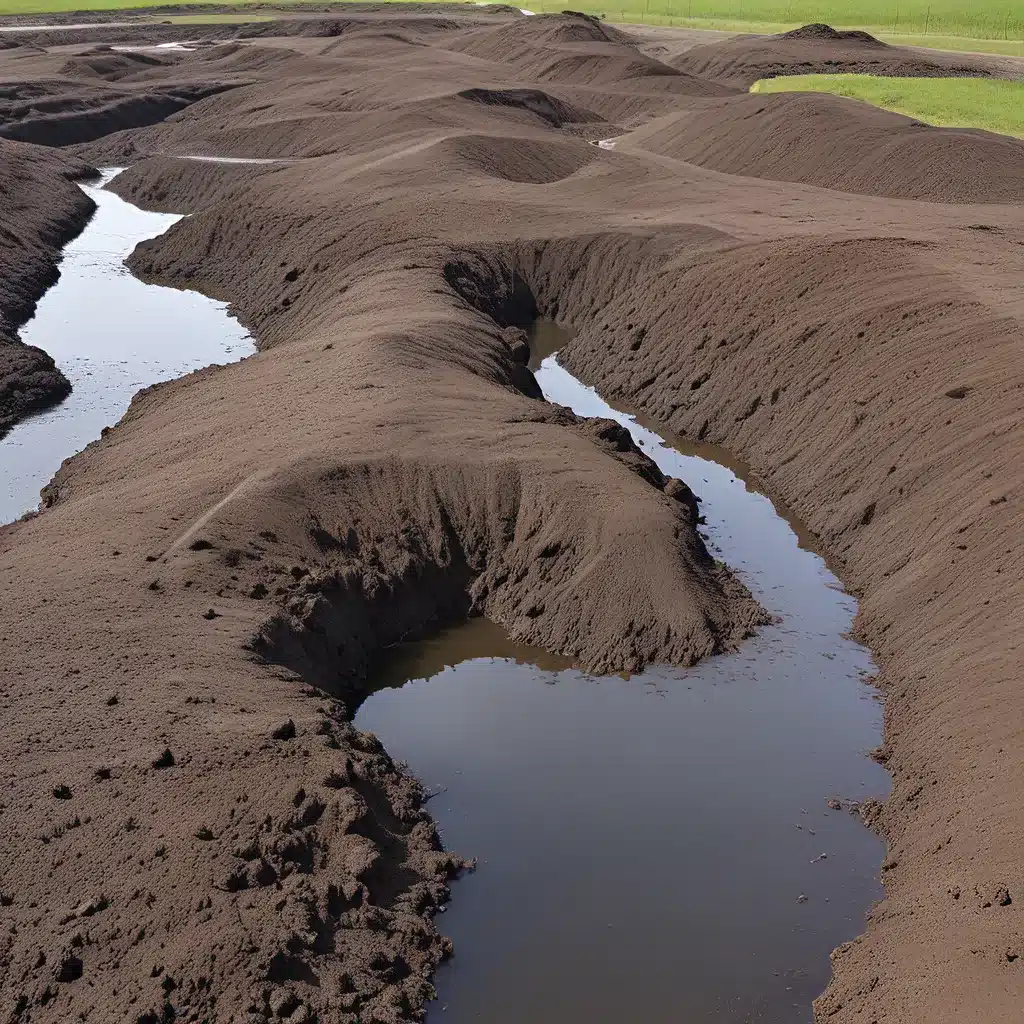
The Poo-tential of Biosolids
You know, sometimes I can’t help but chuckle when I hear the term “biosolids.” I mean, let’s be real – at the end of the day, it’s just fancy talk for sewage sludge. But don’t let that fool you, my friends. This stuff is anything but a waste product. In fact, it might just hold the key to a more sustainable future.
As the Manager of Environmental Services at Inland Waters, I’ve seen firsthand the incredible potential of biosolids. These nutrient-rich organic materials are the unsung heroes of the wastewater treatment world, and trust me, they’re not just being flushed down the drain.
The Biosolids Boom: Trends and Challenges
Over the past few decades, the management of biosolids has undergone a fascinating transformation. According to the New York State Department of Environmental Conservation, the most popular method for handling biosolids used to be landfilling, accounting for a whopping 68% of the total biosolids produced in the state back in 2015.
But the times, they are a-changin’. Slowly but surely, the tides are turning, and more and more of this valuable resource is being put to good use. In fact, the same report shows that beneficial use methods like land application, composting, and mine reclamation now make up a respectable 16% of the total biosolids management in New York.
Sure, there are still challenges to overcome. As the European Commission points out, sewage sludge can contain some pesky contaminants like heavy metals and pathogens. But with the right treatment and processing, these concerns can be effectively mitigated.
Harnessing the Power of Biosolids
So, what exactly makes biosolids such a valuable resource? Well, for starters, they’re chock-full of nutrients like nitrogen and phosphorus – the very same stuff that helps our crops and plants thrive. And as the U.S. Environmental Protection Agency notes, when applied to land at the appropriate agronomic rate, biosolids can work wonders, improving soil structure and even reducing the need for synthetic fertilizers.
But the benefits don’t stop there. Biosolids can also play a crucial role in land reclamation efforts, helping to restore damaged or degraded soils. And they’ve even been found to promote rapid timber growth, making them a valuable asset in the forestry industry.
Sustainable Sludge Solutions
So, how can we harness the full power of biosolids and turn this “waste” into a true asset? Well, the team at Inland Waters has been hard at work exploring innovative approaches to sustainable sludge management.
Composting: The Dirt on Nutrient Recycling
One of the most promising methods we’ve been experimenting with is composting. By blending biosolids with other organic materials like yard waste or agricultural byproducts, we can create a nutrient-rich compost that can be used to enrich soils and promote plant growth. The best part? Composting helps to break down any remaining pathogens or contaminants, making the end product safe for agricultural and landscaping applications.
Thermal Drying: Turning Up the Heat on Sludge
Another technique we’ve been exploring is thermal drying. By using high temperatures to remove moisture from the biosolids, we can produce a dry, granular product that’s easy to handle and transport. This not only reduces the volume of the material but also helps to further stabilize it, making it a more attractive option for land application or even use as a fuel source.
Anaerobic Digestion: Harnessing the Power of Microbes
And let’s not forget about anaerobic digestion. By allowing the natural breakdown of organic matter by microorganisms in the absence of oxygen, we can generate valuable biogas – a renewable energy source that can be used to power our treatment facilities or even be fed back into the grid.
The Future of Biosolids: A Brighter, Greener Tomorrow
As we continue to explore these and other innovative approaches to biosolids management, one thing is clear: the future is looking bright. By embracing the power of this often-overlooked resource, we can not only reduce the burden on our landfills and waste disposal systems but also contribute to a more sustainable and circular economy.
So, the next time you flush, remember: it’s not just waste going down the drain. It’s an opportunity to create a greener, more resilient future. And at Inland Waters, we’re committed to being at the forefront of this exciting journey.


